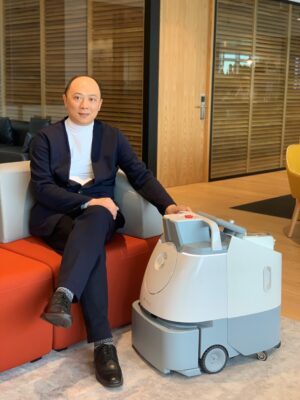How can robots keep public spaces clean?
Interview with Lewis Ho, CEO of Avalon Steritech.
FUTURE OF WORK
PARTNER
From drones to self-disinfecting lift buttons, countries across the world have pivoted rapidly to tackle heightened sanitation standards from the pandemic.
Traditional cleaning methods no longer cut it, as they only provide “basic protection against infectious diseases”, says Lewis Ho, CEO of disinfection technology company Avalon Steritech.
As countries gradually reopen and resume social activities, proper sanitation is crucial. Ho shares how robots can step in to fill the gap.
New standards of cleanliness
Covid-19 has “significantly changed the public’s perception of cleanliness,” says Ho. Manual cleaning methods no longer provide the protection needed to combat infectious diseases.
While cleanliness used to be determined by visible dirt, sanitation standards after the pandemic have extended to include non-visible indicators as well, he adds.
Public spaces with high traffic, such as shopping malls or parks, increase the risk of microscopic viruses spreading via surfaces. Regular, consistent cleaning will be essential.
It is “critical to restore public confidence and to adapt to the post-Covid environment,” Ho says. Organisations need to adopt new disinfection protocols and tech to meet new public demands of cleanliness.

